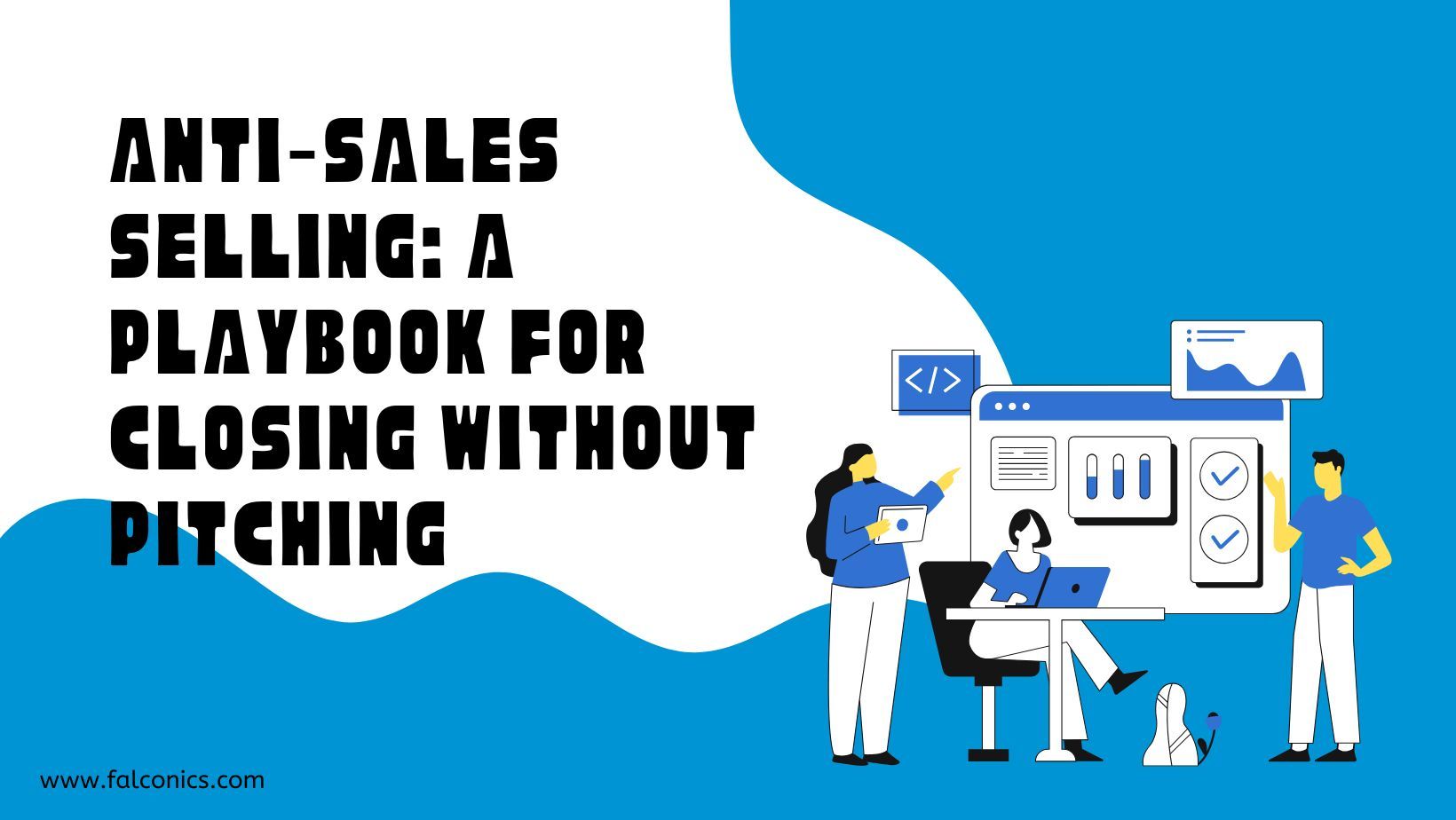Anti‑Sales Selling: A Playbook for Closing Without Pitching

Sales in SaaS is changing. Buyers are more informed, more skeptical, and more selective than ever before. They don't want to be “sold to.” They want to make decisions on their own terms. If you’re still leading with aggressive demos, pitch decks, and pressure tactics, you’re already behind.
Here’s a playbook to help you close more deals without pitching.
What Is Anti‑Sales Selling?
Anti-sales selling is a modern approach to sales where the goal is not to push the product, but to understand the buyer's problems and guide them to a solution (your product) only if it’s actually a good fit.
Unlike traditional selling, anti-sales selling is all about building trust, being transparent, and creating a buying experience that feels helpful and not pushy.
For SaaS companies especially, this method leads to more qualified customers, longer retention, and higher customer satisfaction.
Why Anti-Sales Selling Works
Anti-sales selling works because it feels natural to the buyer. It helps SaaS companies:
- Attract better-fit customers
- Lower churn
- Close deals without friction
- Build trust faster
Why Traditional Sales Tactics Fail in SaaS
SaaS buyers today do most of their research before ever speaking to sales. They’ve read your case studies, checked out competitors, and likely know your pricing. They’ve probably also already compared you to 3–5 competitors before booking a call. So, if your team shows up with a pitch-heavy demo or rehearsed script, it can immediately backfire.
The Anti-Sales Selling Framework
Here’s how to apply this approach step by step in your SaaS sales process:
Qualify Hard, Sell Soft
Don’t waste your time or theirs on the wrong deal. Start every conversation by asking direct, thoughtful questions to really understand what they need. You’re not there to pitch right away. You’re there to see if it even makes sense to move forward.
Ask about:
- Their pain points: What specific problems are they trying to solve right now?
- Their workflow: How do they handle this issue today? Who’s involved? What tools do they use?
- Their current solution: Are they using a competitor? A manual workaround? Nothing at all?
- Their urgency and budget: Is solving this a priority for them right now or just something they’re exploring? Do they have a budget already, or are they still in the planning stage?
Once you have these answers, be honest with yourself and them. If your product isn’t the right fit, say so. That level of transparency builds more trust than trying to push a deal that won’t last. It also saves your team time and keeps your pipeline clean.
Ditch the Demo Script
Your product demo shouldn’t be a full tour of everything your platform can do. That just overwhelms people and wastes time. Instead, focus only on the parts that solve the problem they talked about earlier.
Before the demo, take a minute to repeat what you heard. Then jump straight into that feature. Keep it short, clear, and relevant. Don’t go off-track showing things they didn’t ask about. If they’re interested, they’ll ask for more.
Avoid robotic scripts or rehearsed lines. Speak like a real person.
The goal is not to impress them with features. The goal is to help them clearly see how your product fits into their workflow and makes life easier.
Be Transparent About Limitations
Yes, really.
If your product can’t do something they need, say it up front. Don’t dodge the question or try to spin it. SaaS buyers are smart. If you try to cover it up, they’ll figure it out later and that usually leads to churn. Just give them the full picture so they can make the right call.
Make It Easy to Walk Away
This is one of the hardest things for traditional salespeople to do but one of the most effective.
Let the buyer know it’s totally fine if they decide not to move forward. Say it clearly and mean it.
This removes all pressure. Ironically, it often makes the buyer more interested because it doesn’t feel like a trap. It also saves you time. You stop chasing cold leads and focus on people who are actually ready to buy.
Let the Buyer Own the Decision
Buyers don’t want to feel pushed. Let them stay in control.
That means:
- No hard closing tactics.
- No discount deadlines unless they’re real.
- No overpromising or exaggerated results.
Instead, ask permission to move forward. Giving control builds confidence. It also speeds up the sales cycle because the buyer doesn’t feel pressured to push back.
Final Thoughts
Buyers want clarity. Anti-sales selling gives it to them. It removes the noise, puts the customer first, and helps you stand out in a space full of overpromises and under-delivery. So next time you're in a sales conversation, skip the script and start listening.
Want to train your team in anti-sales selling? Falconics build custom playbooks, conversation frameworks, and buyer-centric strategies that actually work in today’s market. Contact us today.




